On the Dynamics of Canyon–Flow Interactions
Abstract
1. Introduction
2. Materials and Methods
3. Results and Discussion
3.1. Topographic Steering Scenario
3.2. Canyon-Upwelling Scenario
3.3. Impacts of Density Effects
3.4. Confinement of Canyon Upwelling to the Upper Continental Slope
3.5. Impacts of Radius of Curvature
4. Conclusions
- Canyon upwelling is a signature of a stationary topographic Rossby wave forming downstream from the canyon. It exclusively develops for right-bounded (left-bounded) shelf-break flows in the southern (northern) hemisphere.
- The initial phase of canyon upwelling is a largely barotropic and friction-independent process and can be explained by the basic principle of conservation of potential vorticity.
- Baroclinic geostrophic adjustment enhances canyon upwelling via the formation of narrow (~few km wide) frontal jets.
Funding
Acknowledgments
Conflicts of Interest
References
- Baines, P.G.; Condie, S. Observations and modelling of Antarctic downslope flows: A review. In Ocean, Ice and Atmosphere: Interactions at the Continental Margin; Jakobs, S.S., Weiss, R., Eds.; Antarctic Research Series; AGU: Washington, DC, USA, 1998; Volume 15, pp. 29–49. [Google Scholar]
- Kämpf, J.; Fohrmann, H. Sediment-driven downslope flow in submarine canyons and channels: Three-dimensional numerical experiments. J. Phys. Oceanogr. 2000, 30, 2302–2319. [Google Scholar] [CrossRef]
- Hickey, B.M. The response of a steep-sided narrow canyon to strong wind forcing. J. Phys. Oceanogr. 1997, 27, 697–726. [Google Scholar] [CrossRef]
- Allen, S.E.; Hickey, B.M. Dynamics of advection-driven upwelling over a submarine canyon. J. Geophys. Res. Oceans 2010, 115, C08018. [Google Scholar] [CrossRef]
- Kämpf, J. On the preconditioning of coastal upwelling in the eastern Great Australian Bight. J. Geophys. Res. 2010, 115. [Google Scholar] [CrossRef]
- Freeland, H.J.; Denman, K.L. A topographically controlled upwelling center off southern Vancouver Island. J. Mar. Res. 1982, 40, 1069–1093. [Google Scholar]
- Kämpf, J. Transient wind-driven upwelling in a submarine canyon: A process-oriented modeling study. J. Geophys. Res. 2006, 111, 1–12. [Google Scholar] [CrossRef]
- Kämpf, J. On the magnitude of upwelling fluxes in submarine canyons. Cont. Shelf Res. 2007, 27, 2211–2223. [Google Scholar] [CrossRef]
- Sutherland, D.A.; Cenedese, C. Laboratory experiments on the interactions of a buoyant coastal current with a canyon: Application to the East Greenland Current. J. Phys. Oceanogr. 2009, 39, 1258–1271. [Google Scholar] [CrossRef]
- Luyten, P.J.; Jones, J.E.; Proctor, R.; Tabor, A.; Tett, P.; Wild-Allen, K. COHERENS—A Coupled Hydrodynamical-Ecological Model for Regional and Shelf Seas: User Documentation; MUMM Report; Management Unit of the North Sea: Brussels, Belgium, 1999; 914p. [Google Scholar]
- Kämpf, J. On the interaction of time-variable flows with a shelf-break canyon. J. Phys. Oceanogr. 2009, 39, 248–260. [Google Scholar] [CrossRef]
- Pacanowsky, R.C.; Philander, S.G.H. Parameterization of vertical mixing in numerical models of tropical oceans. J. Phys. Oceanogr. 1981, 11, 1443–1451. [Google Scholar] [CrossRef]
- Klinck, J. Circulation near submarine canyons: A modelling study. J. Geophys. Res. 1996, 101, 1211–1223. [Google Scholar] [CrossRef]
- Cushman-Roisin, B. Introduction to Geophysical Fluid Dynamics; Prentice Hall: Upper Saddle River, NJ, USA, 1994; 320p. [Google Scholar]
- Mirshak, R.; Allen, S.E. Spin-up and the effects of a submarine canyon: Application to upwelling in Astoria Canyon. J. Geophys. Res. 2005, 110, C02013. [Google Scholar] [CrossRef]
- Charney, J.; Eliassen, A. A numerical model for predicting the perturbation of the middle latitude and westerlies. Tellus 1949, 1, 38–54. [Google Scholar] [CrossRef]
- Huppert, H.E.; Bryan, K. Topographically generated eddies. Deep Sea Res. 1976, 23, 655–679. [Google Scholar] [CrossRef]
- McIntyre, M.E. On stationary topography-induced rossby wave patterns in barotropic zonal current. Dtsch. Hydrogr. Z. 1968, 21, 203–214. [Google Scholar] [CrossRef]
- Clark, R.A.; Fofonoff, N.P. Oceanic flow over varying bottom topography. J. Mar. Res. 1969, 27, 226–240. [Google Scholar]
- Ikeda, M. Stationary rossby-waves in a two-layer model produced by a submarine ridge. J. Oceanogr. Soc. Jpn. 1979, 30, 100–109. [Google Scholar] [CrossRef]
- Dickinson, R.E. Rossby waves—Long-period oscillations of oceans and atmospheres. Annu. Rev. Fluid Mech. 1978, 10, 159–195. [Google Scholar] [CrossRef]
- Rhines, P.B. Jets and orography: Idealized experiments with tip-jets and lighthill blocking. J. Atmos. Sci. 2007, 64, 3627–3639. [Google Scholar] [CrossRef]
- Freeland, H.J. The flow of a coastal current past a blunt headland. Atmos. Ocean 1990, 28, 288–302. [Google Scholar] [CrossRef]
- Kämpf, J. Lee effects of localized upwelling in a shelf-break canyon. Cont. Shelf Res. 2012, 42, 78–88. [Google Scholar] [CrossRef]
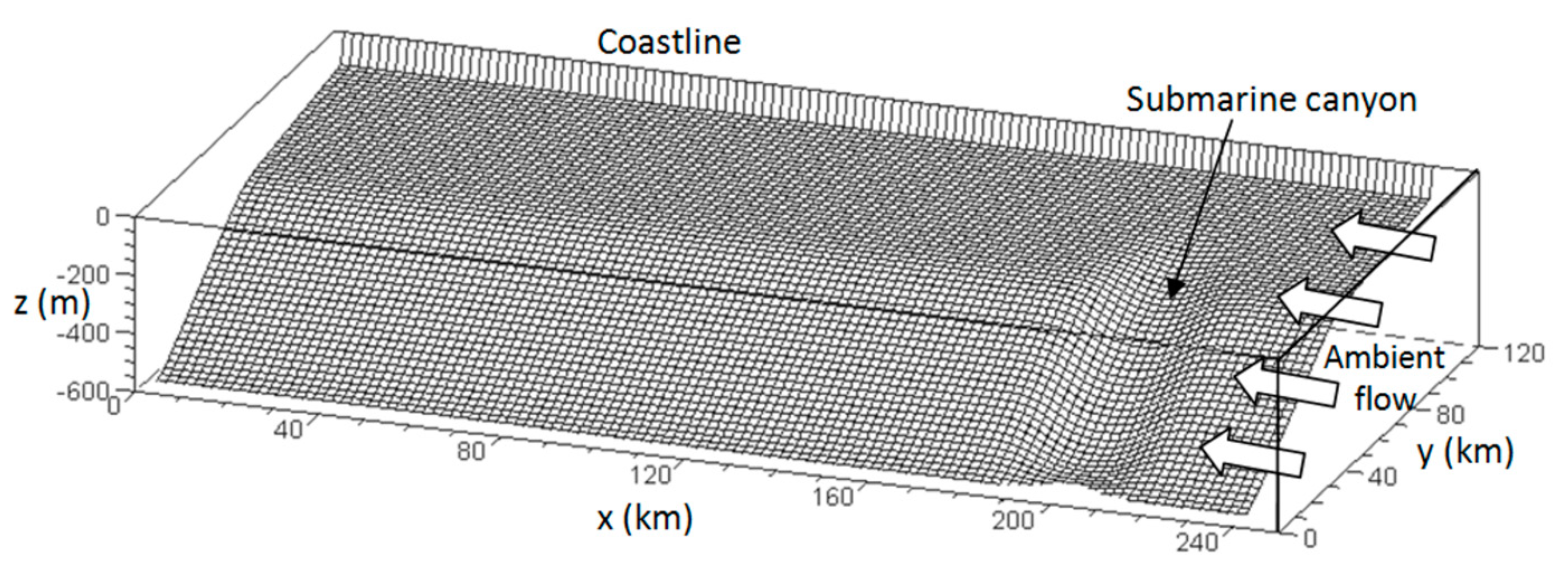
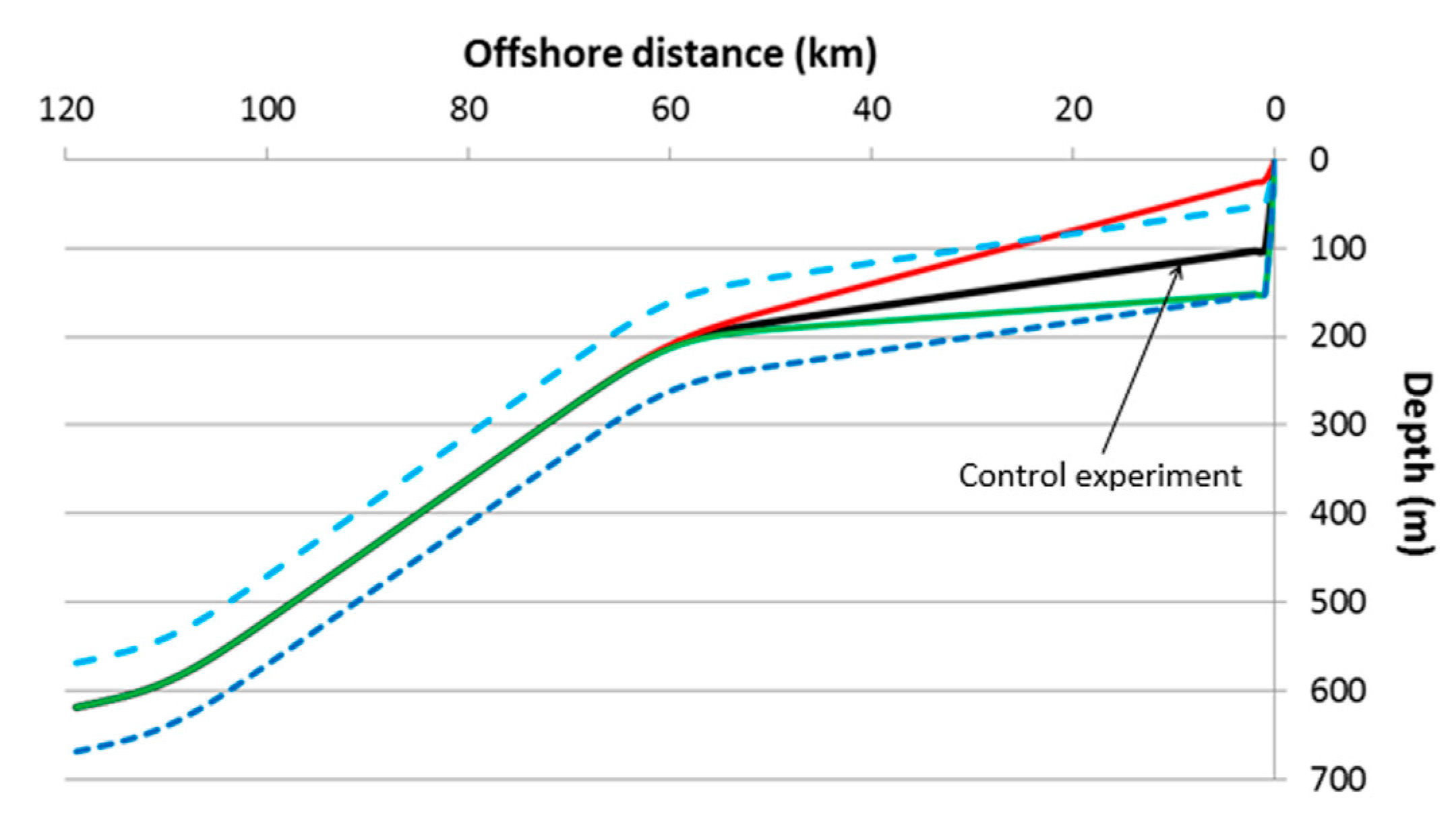
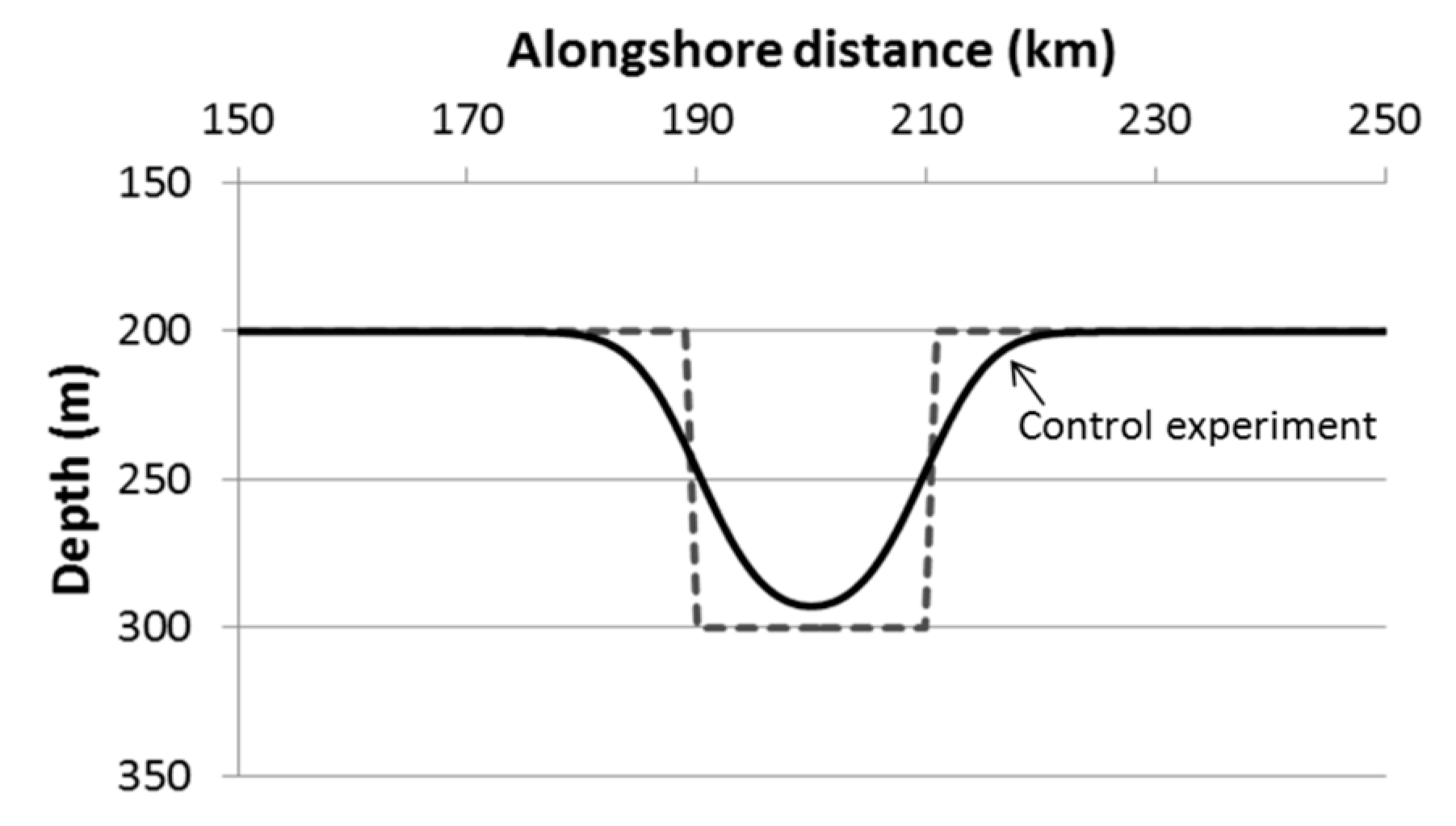
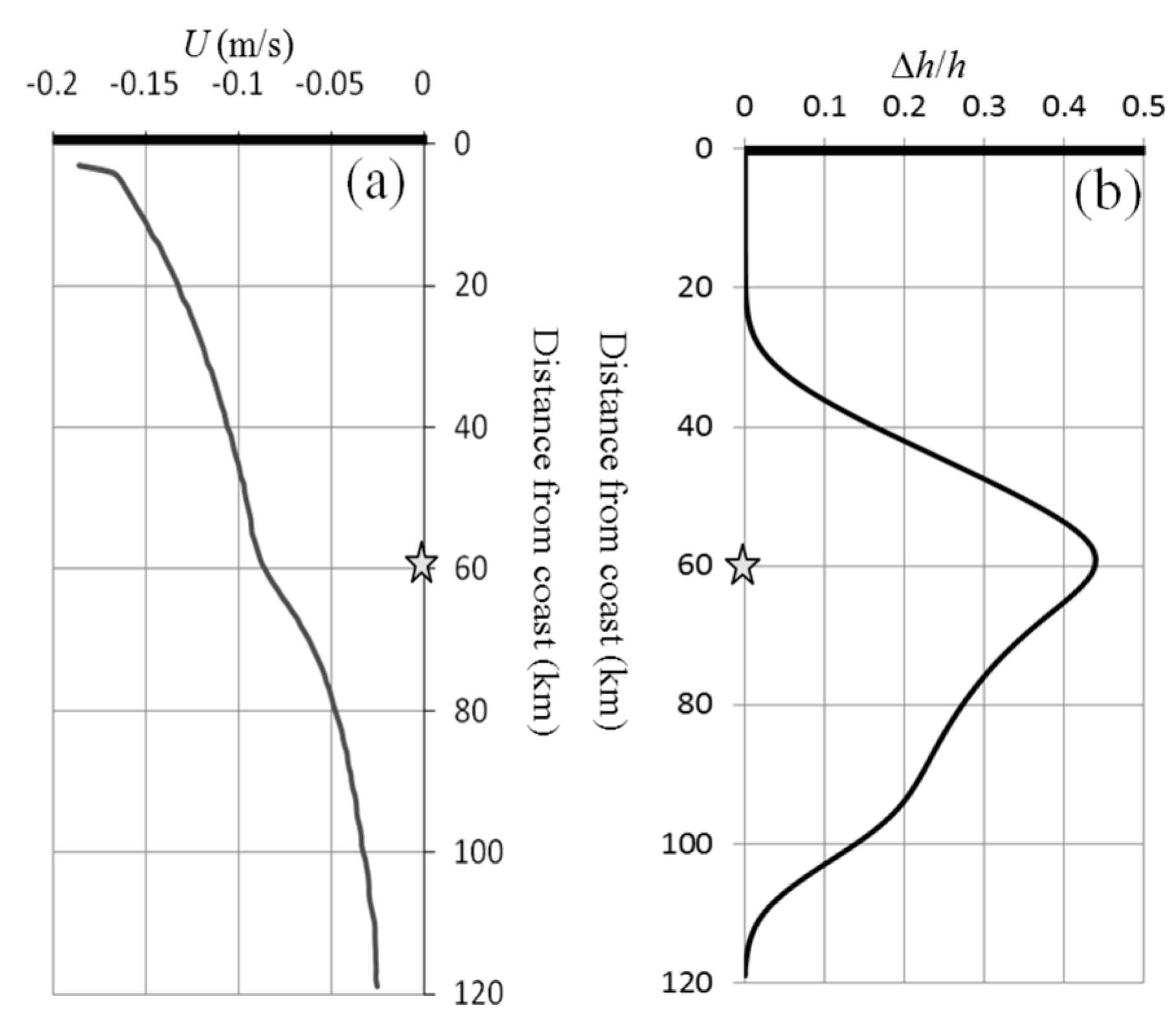
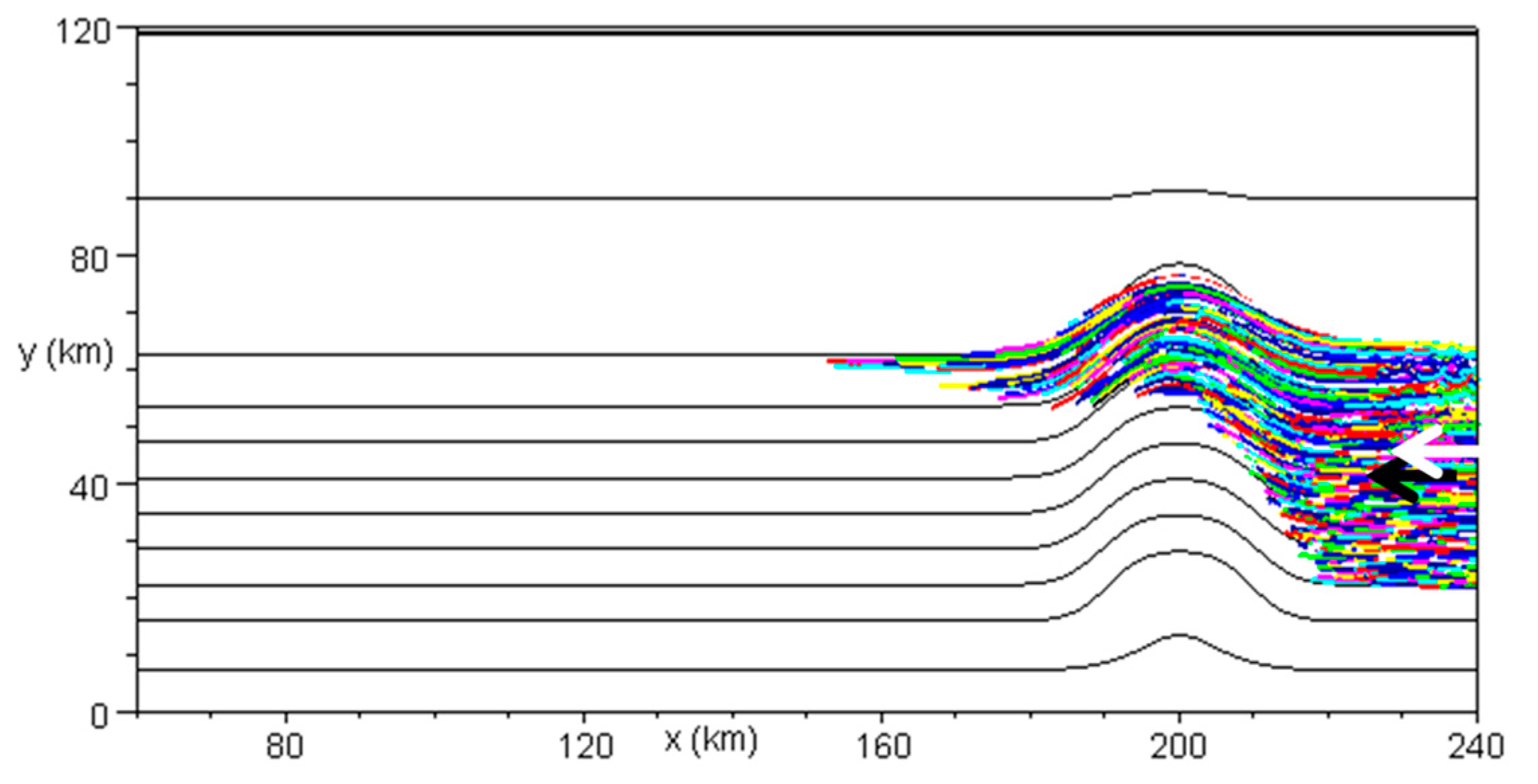
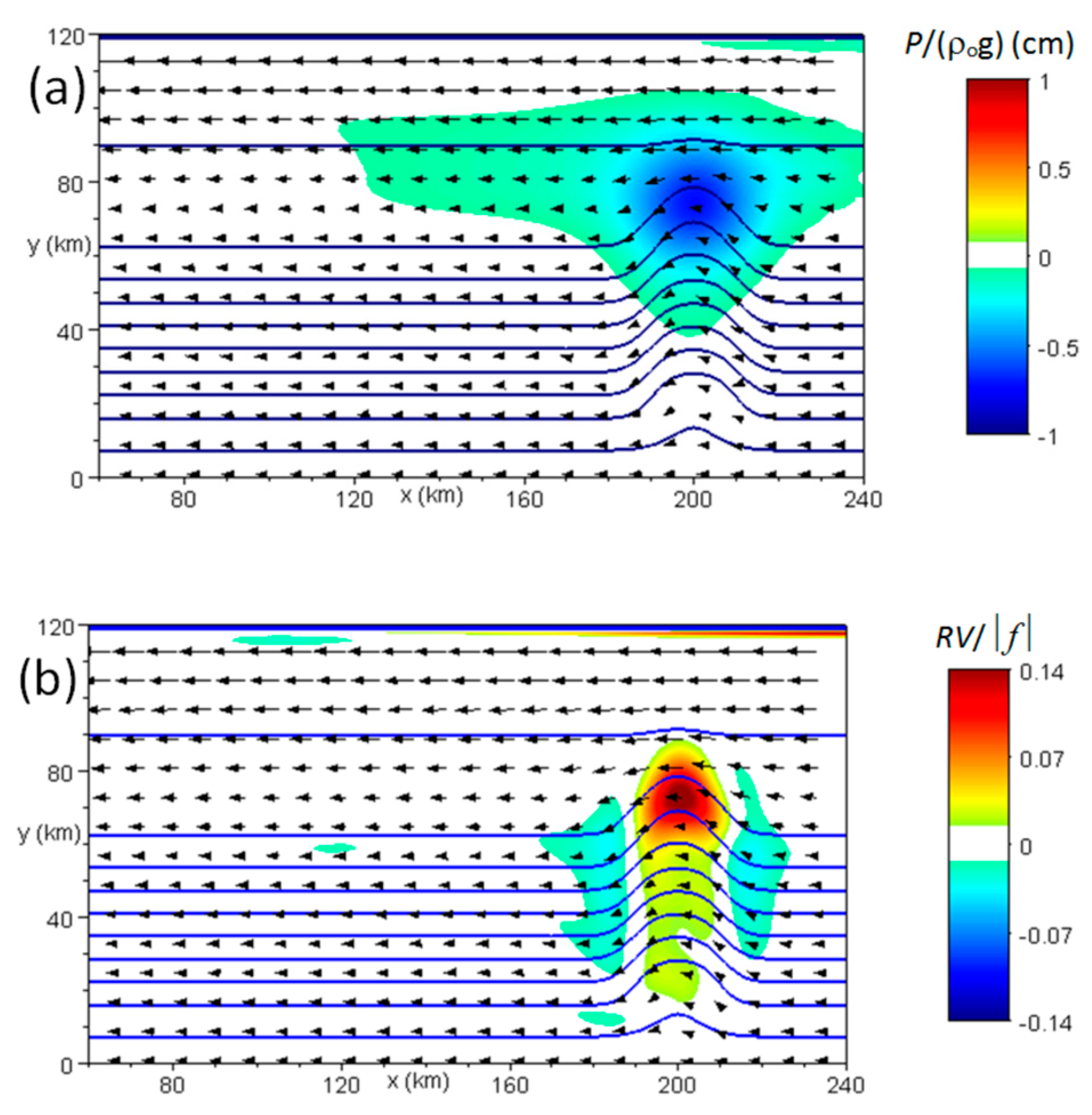
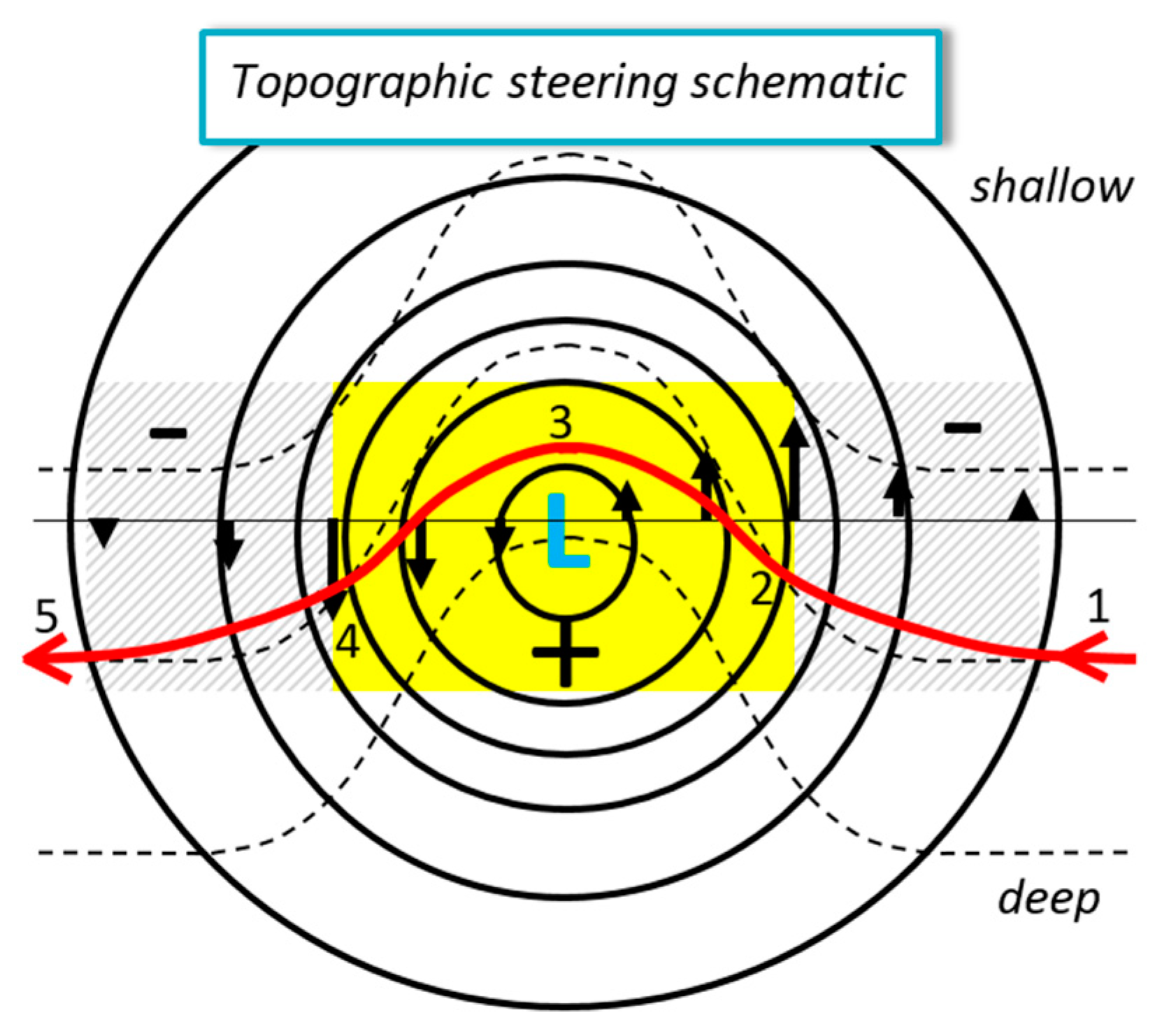
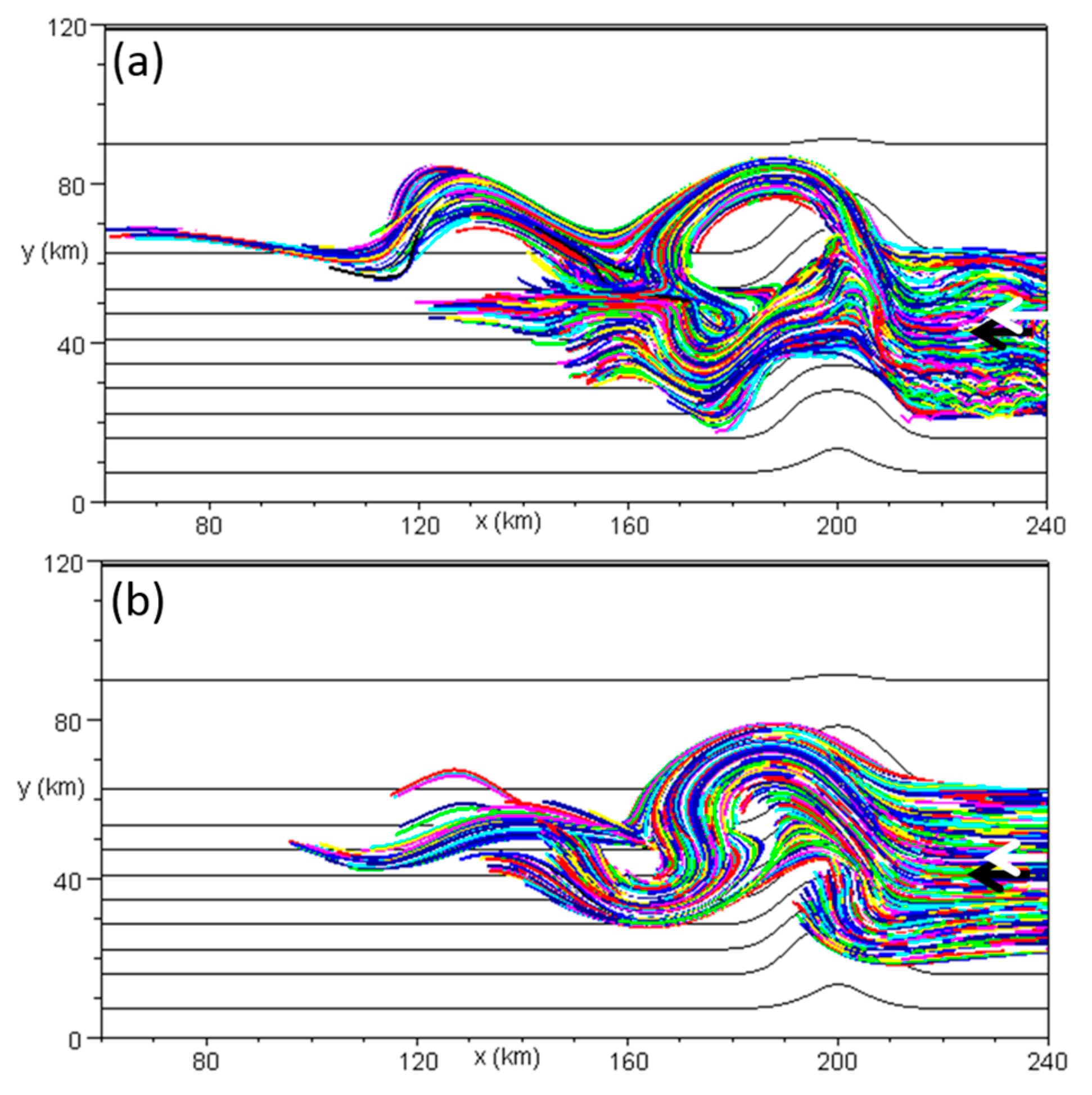
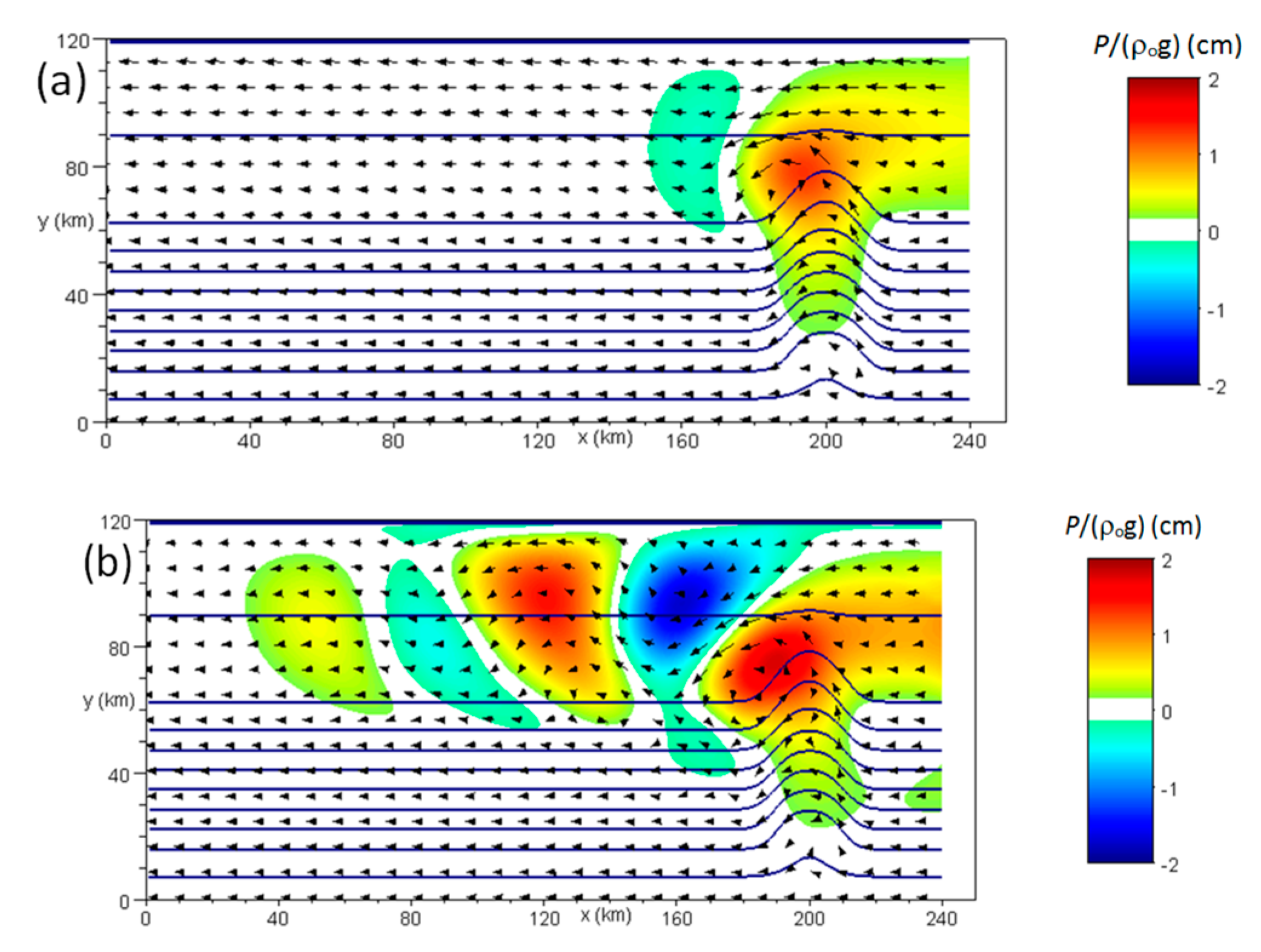
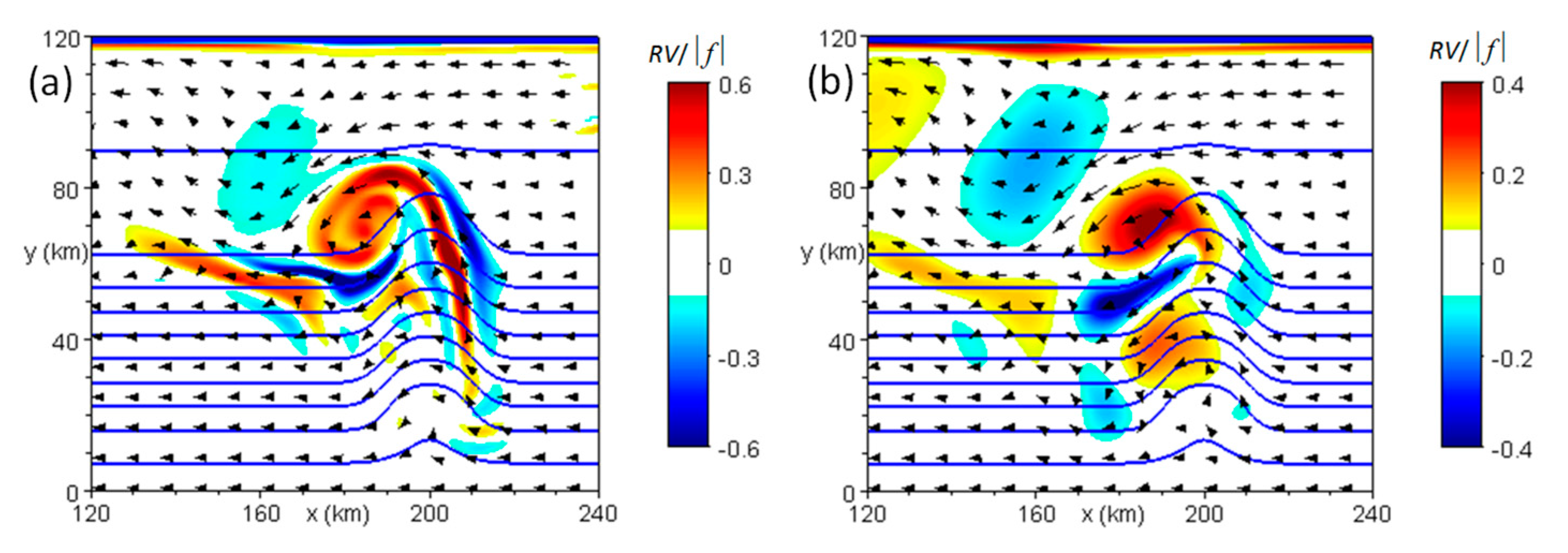
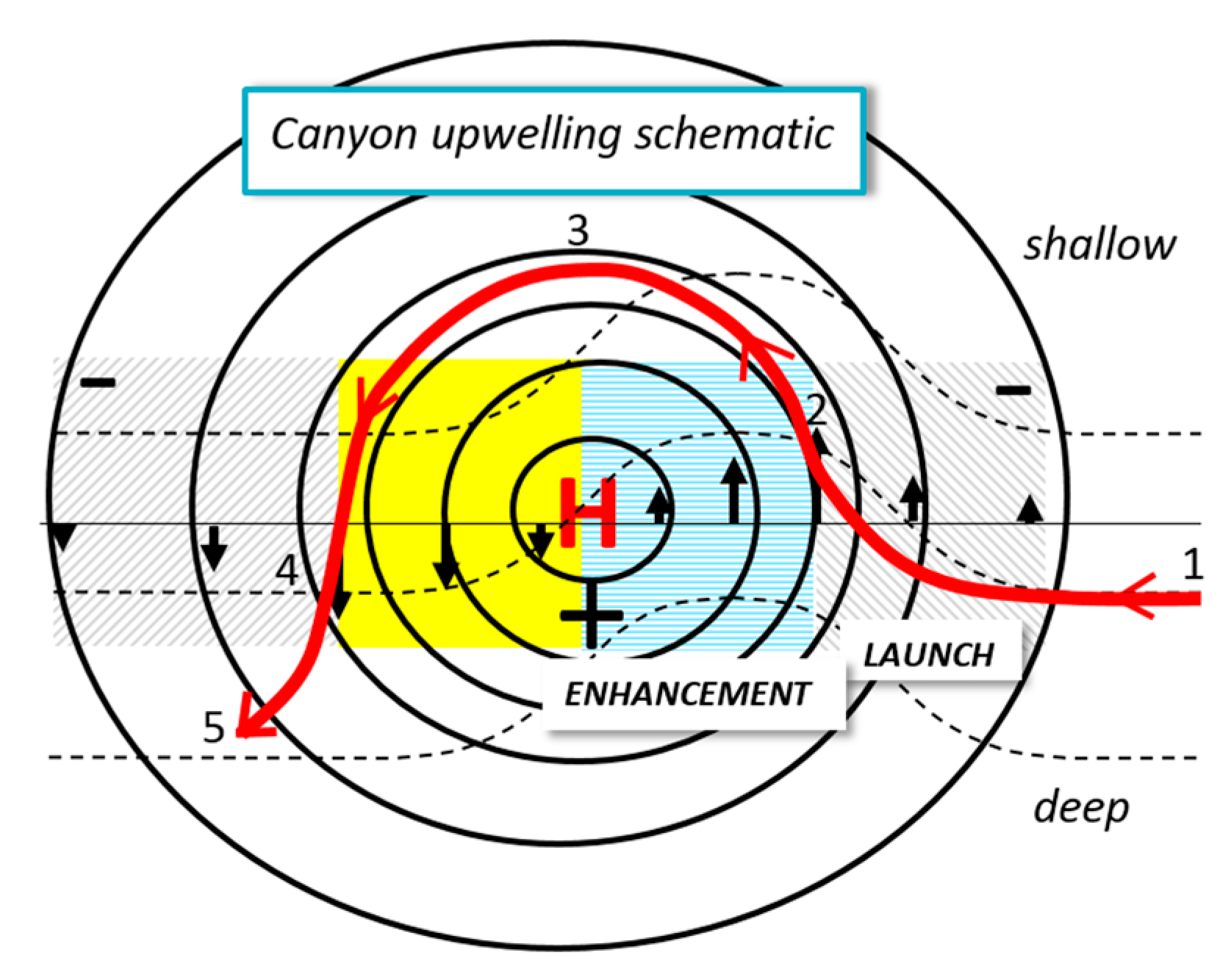
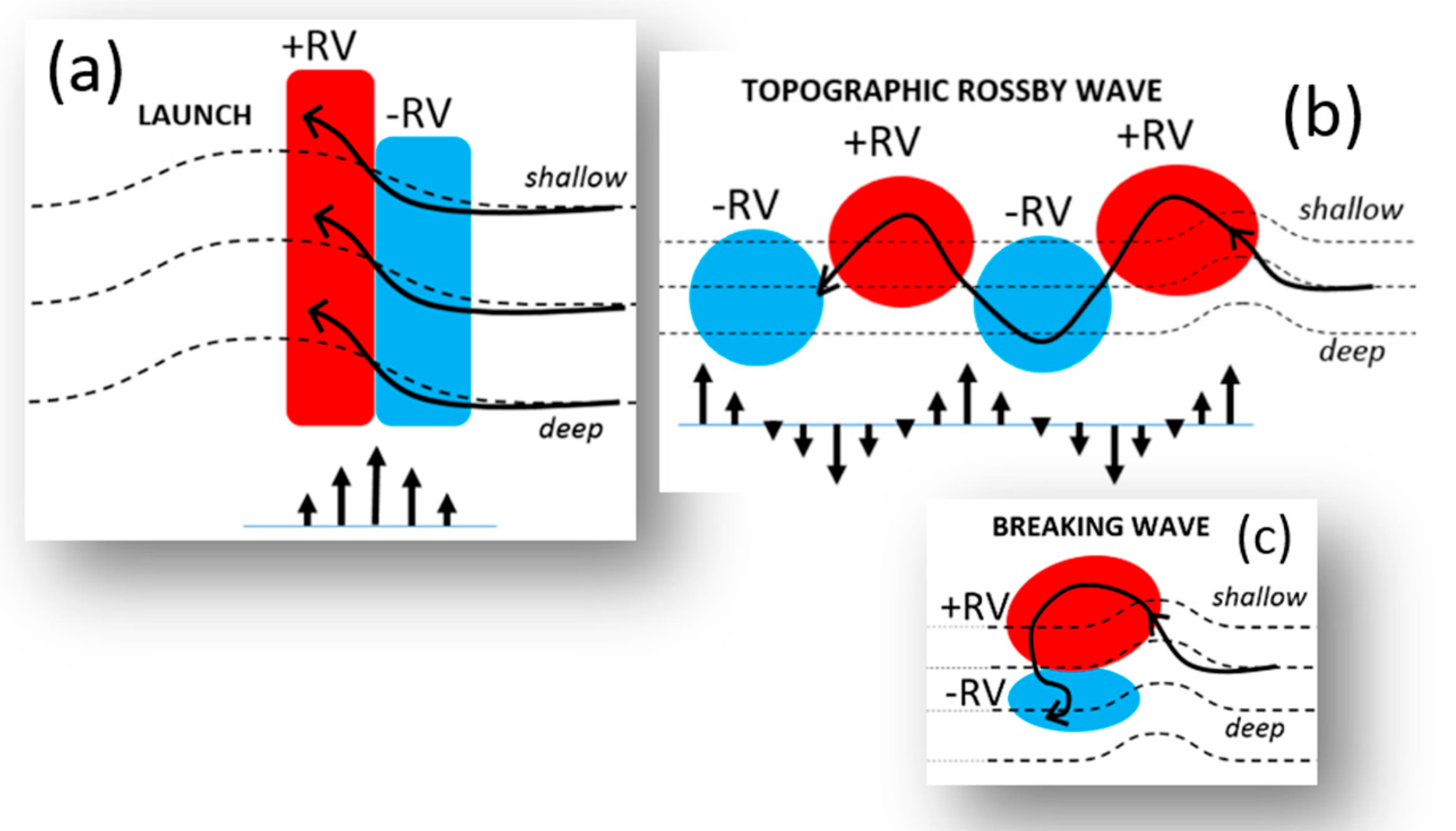
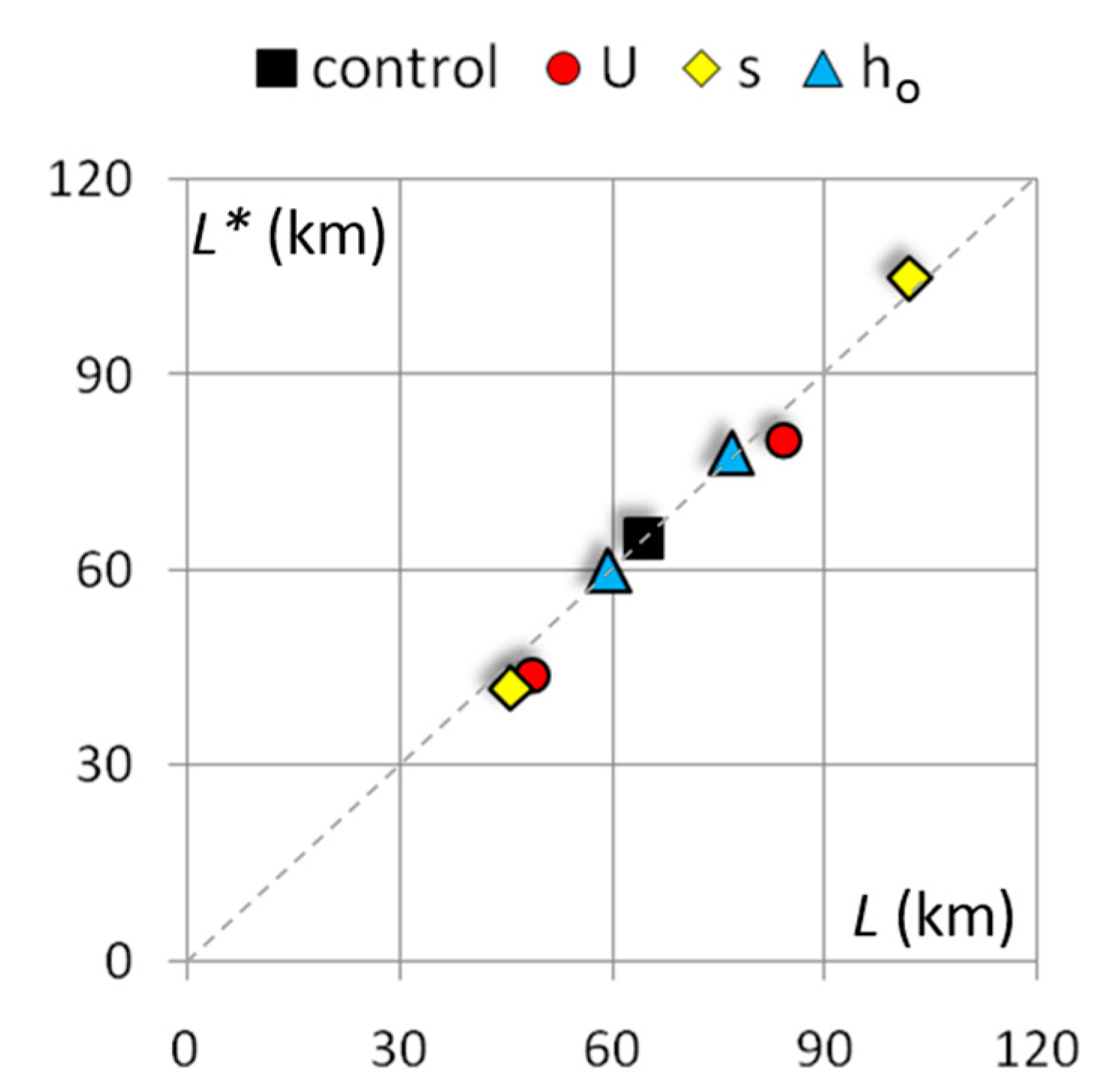
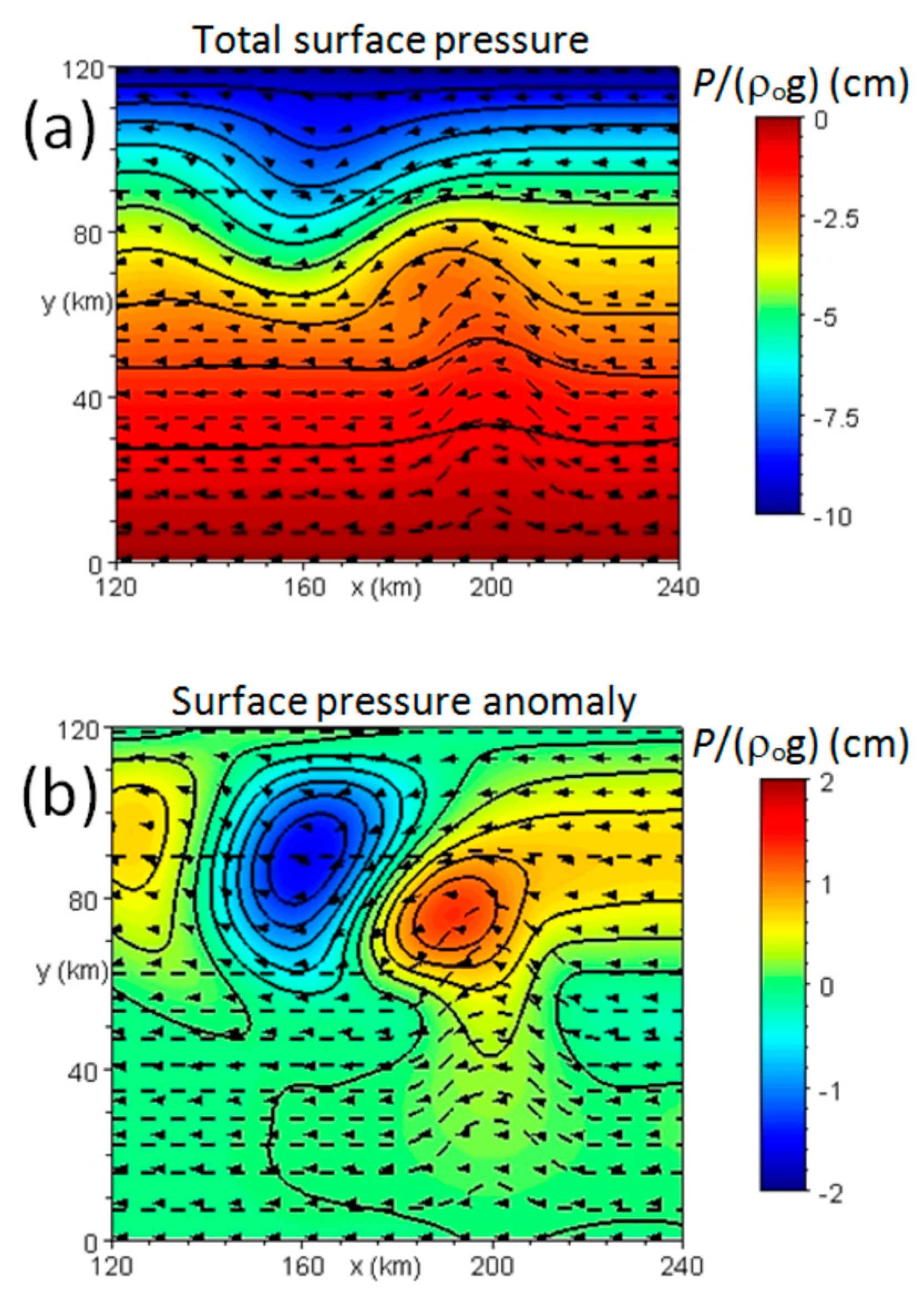
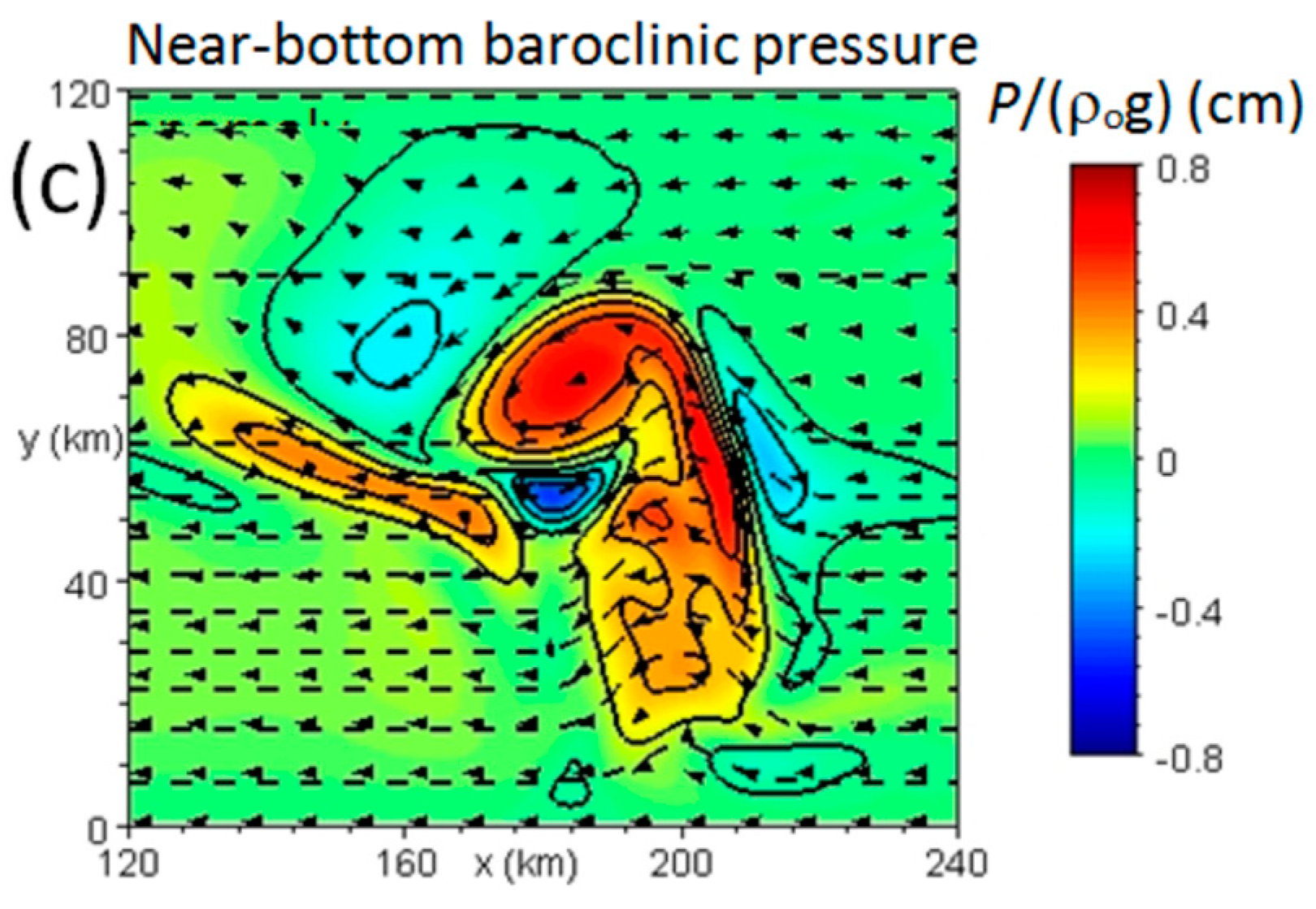
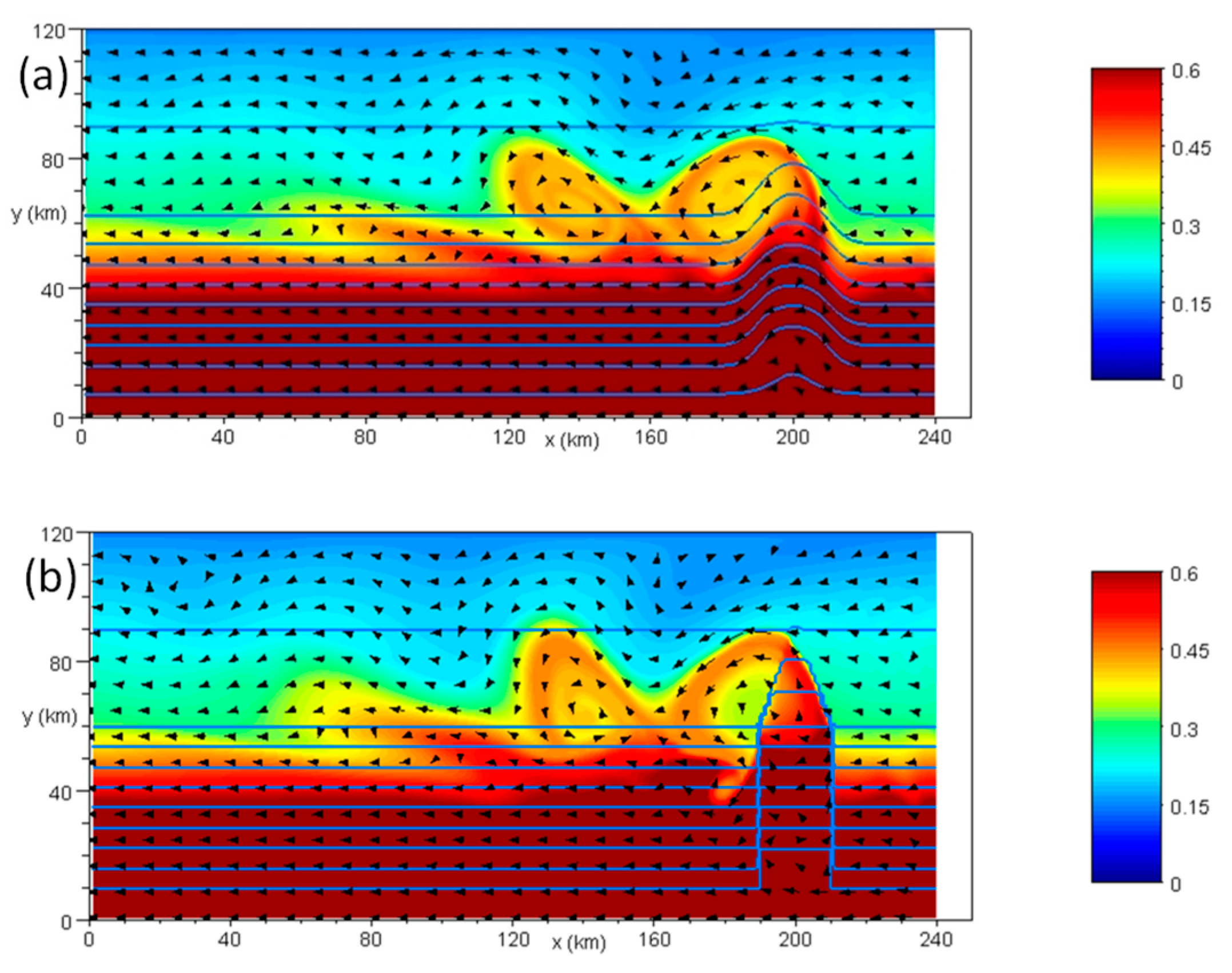
© 2018 by the author. Licensee MDPI, Basel, Switzerland. This article is an open access article distributed under the terms and conditions of the Creative Commons Attribution (CC BY) license (http://creativecommons.org/licenses/by/4.0/).
Share and Cite
Kämpf, J. On the Dynamics of Canyon–Flow Interactions. J. Mar. Sci. Eng. 2018, 6, 129. https://doi.org/10.3390/jmse6040129
Kämpf J. On the Dynamics of Canyon–Flow Interactions. Journal of Marine Science and Engineering. 2018; 6(4):129. https://doi.org/10.3390/jmse6040129
Chicago/Turabian StyleKämpf, Jochen. 2018. "On the Dynamics of Canyon–Flow Interactions" Journal of Marine Science and Engineering 6, no. 4: 129. https://doi.org/10.3390/jmse6040129
APA StyleKämpf, J. (2018). On the Dynamics of Canyon–Flow Interactions. Journal of Marine Science and Engineering, 6(4), 129. https://doi.org/10.3390/jmse6040129




